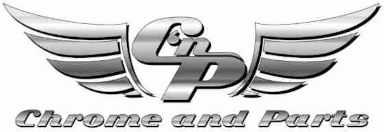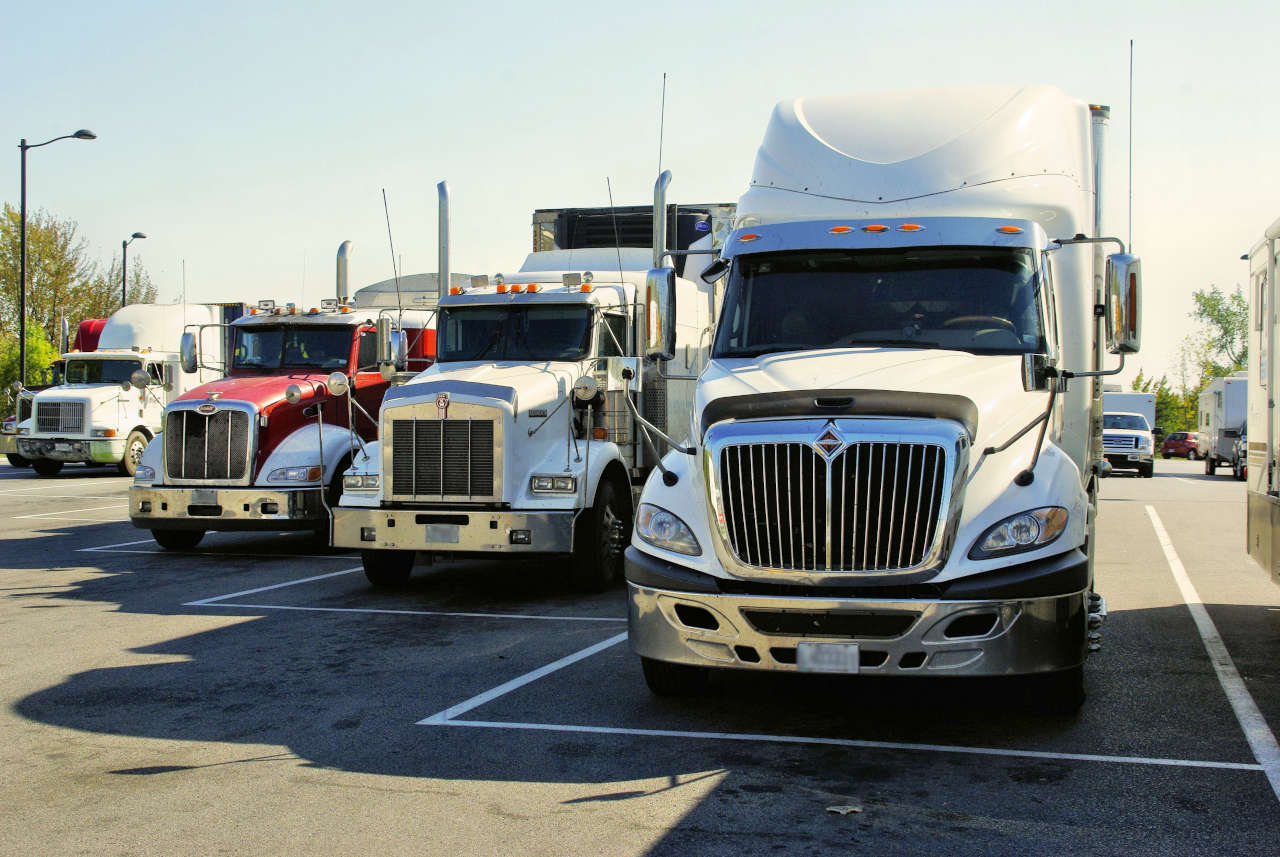In this day and age everyone gets frustrated when searching for parking, but when you’re driving an 18-wheeler, finding a spot to take a break or park overnight can be an unnerving and daunting task. Primarily, that’s because there are about 1.5 million truck drivers on the road and at any point in time yet fewer than 400,000 available parking spots. Some industry stakeholders say the problem is not so much about enough parking and more about finding available parking spaces. Others say the ELD mandate is to blame. Addressing the issue will require taking both opinions into account. So this article aims to do just that.
For many years, the trucking community has lamented the unavailability of safe and cheap parking spots for truckers to rest after their Federal Motor Carrier Safety Administration-allotted hours of service (HoS) are up. In fact, 19.9% of the truckers surveyed in an American Transportation Research Institute (ATRI) study placed the issue among their top three concerns.
The reason they are frustrated is because parking is not always available when they need it, so they need to make a decision in advance to start looking for a parking spot. Drivers essentially have two equally unattractive options. First, they can try to find a parking spot quickly at the risk of cutting their workday short, sometimes by well over an hour, as ATRI results show 40% of drivers spend an hour or more searching for a parking spot. This means they cut their productive driving time short [to ensure] they are in compliance with the Hours of Service rule. Alternatively, drivers may spend excessive time searching for a spot and end up extending their day beyond the legal hour limit. Despite their best efforts, they may still have to park on a ramp or at an unauthorized location — which may or may not be safe. And even permissible parking at a rest area is no guarantee of safety, given the transient nature of other motorists and drivers using the stop.
For female drivers especially, these and other safety concerns compound the many challenges related to trucking. According to a survey conducted by Women in Trucking, in which female drivers ranked their safety at 4.4 on a scale of 1 to 10. If you consider female drivers, they have a heightened awareness of their own security, both inside and outside of the truck. Safety includes more than the maintenance of the equipment; it includes the company’s culture in how they compel drivers to operate in inclement weather conditions, but more importantly, where they are expected to load and unload. For instance, is the customer in a part of town that has violent activity, or is the docking area well lit and secure? That greater awareness extends to the significant issue of harassment. It is common practice that some female drivers fuel and eat at one location then drive to another to sleep. They do so they do not have to get out of the truck at the place they intend to sleep and reveal to anyone nearby that they are driving solo.
Jasons Law
A truly black day for humanity, one could hardly argue was on Thursday, March 5, 2009. Jason Rivenburg was scheduled to deliver at Food Lion supermarket. The store would not accept early deliveries and would not allow Jason to park on their property and wait until his appointed time, so Jason pulled into an abandoned gas station– the only place with available parking in the area. Where trucker Jason parked his truck at a gas station 12 miles from his destination because it was too early to make his delivery. Before he was able to make that delivery, Rivenburg was shot and killed, leaving behind his wife Hope, who was pregnant with twins at the time, and a son who was to turn 2 a month later. As an effort to acknowledge this tragedy and to ensure that truckers will no longer have to come across something like this came about the Jasons Law.
What is included in Jasons Law ?
As included in the Senate transportation reauthorization bill, Jason’s Law authorizes funding to be spent on truck parking facilities and identifies that it is a national priority to address the shortage of long-term parking for commercial motor vehicles and the safety of drivers.
Projects eligible to be funded with highway safety funds include:
- Constructing safety rest areas that include parking for commercial motor vehicles.
- Constructing commercial motor vehicle parking facilities adjacent to commercial truck stops and travel plazas.
- Opening existing facilities to commercial motor vehicle parking, including inspection and weigh stations and park-and-ride facilities.
- Promoting the availability of publicly or privately provided commercial motor vehicle parking on the National Highway System using intelligent transportation systems and other means.
- Constructing turnouts along the National Highway System for commercial motor vehicles.
- Making capital improvements to public commercial motor vehicle parking facilities currently closed on a seasonal basis to allow the facilities to remain open year-round.
- Improving the geometric design of interchanges on the National Highway System to improve access to commercial motor vehicle parking facilities.
Truck Parking Problem
Some of the bitter facts in regard to the truck parking problem is as follows :
- 90% Overnight Parking of drivers experience problems finding safe parking at night.
- 63% Daily Search of truck drivers spend 54 minutes searching for parking daily.
- 86% Cargo Theft of truck cargo theft happens in unsecured areas.
- 70% Violating HOS of truck drivers was due to parking related issues
Today’s shortage of available parking for truckers is likely due to a combination of four key factors:
- Inadequate state funding making it difficult to provide more public parking spaces
- Increased end-of-transit and less-than-truckload routes putting pressure on parking in urban areas
- Greater demand for shipping resulted in a significant increase of drivers and trucks on the roads
- Hours-of-service driving restrictions limiting drive-time windows. It is a significant factor because in today's highway/infrastructure reality of often-snarled traffic, drivers have to park very close to their next target destination or else risk losing too many precious minutes of available drive time. While experts debate the idea, anecdotal evidence suggests that parking has become more challenging since the ELD mandate took effect in December 2017. As many as 75 percent of truckers claim to struggle with finding parking on a regular basis. In particular, drivers cite trouble finding spots in locations where they need them. Because parking spaces in key locations fill up fast, many drivers need help locating alternative and hidden spots. While the mandate itself may not be causing the parking space problem, ELD data gathered from large over-the-road carriers does reveal a contributing issue: drivers consistently quit driving about 2 hours before their 14-hour clock runs out. Truck drivers are not immune to human nature, which means about 70 percent wake with the sun and start driving in the morning. Driven by their desire to find parking space for the night, many simply prioritize finding a safe place to stop, get a meal, and sleep before additional rolling time. A recent poll supports this logic. About two-thirds of respondent drivers said they now find parking lots full or almost full earlier in the evening, and only about 6 percent claim to drive at night.
Booting
In the event of parking in non-designated or not-approved parking spots, truckers face the inevitability of booting. When a vehicle is parked somewhere that it’s not supposed to be, ex: on private property, private companies can (in some places) put “boots” on them. The driver must then pay to have the boot removed.
A practice that first arose more than half a century ago as a way for big-city administrators to punish parking-ticket felons has been a reason for a lot of misery for truckers in regard to truck parking. Truckers increasingly have reported the use of wheel boots, windshield barnacles and in some cases tow trucks to enforce parking prohibitions on private property.
Fines of booting
Fees for removing the boot or, in some cases, dropping the tow hook for a discount on the cash penalty have ranged from a couple hundred dollars to more than 10 times that amount. Outcries against the practice, particularly when the truck is occupied by a sleeping driver, are also on the rise.
State and municipal regulations exist all around the nation pertaining to booting and towing companies’ practices, including required signage and fees. When it comes to booting of occupied vehicles without notice, there’s little on the books anywhere. Common in areas where drivers usually have run into problems – namely Georgia, Virginia, North Carolina and Kentucky.
Legality of booting
Regulation being developed in the state of Colorado where the “Denver boot” was first built and used in the middle part of the last century, could show a path forward for other states to follow suit. The most important provision among those regulations is one that expressly prohibits booting or immobilizing an occupied vehicle, with exceptions allowed for intervention of a law enforcement officer. As this way the benefit of doubt favors truckers. A booting company representative will be forced to “come up to the vehicle and knock on the door” before holding the vehicle hostage. However the fact that no mention in the regulations of so-called “barnacles” — devices that suction to parts of the vehicle, like the windshield, removable only with specialized tools — might prove to be a gaping loophole.
Another rule in the proposal puts a statewide cap on the boot removal fee at $120, and a $25 maximum charge for situations where the vehicle’s operator returns to the vehicle before the boot is installed. Those figures are well below four-figure fees that usually to be seen in invoices from companies operating overnight. There can be a legitimate role for booting vehicles, but when you’re booting an occupied motor vehicle, it raises questions when the fee is $2,000 or $3,000. There’s no justification for that amount.
A recent case study, if you may: there were no laws at all regulating booting in DeKalb County. Truckers were forced to pay $600 or more to remove boots from their vehicles. Often police were called and drivers reported that they had been away from their vehicles for only a few minutes.
Complaints about predatory business practices finally spurred the DeKalb County Commission to action. Recently, the Commission voted the new law into effect. Now boot removal must cost no more than $150 and must occur no more than one hour after payment is received. A vehicle must have been improperly parked for at least 20 minutes before it can be booted, and photographic proof must be provided. Additionally, companies must apply for permits to operate booting services, and all employees who install boots must wear a body camera. Similarly only if all states and counties would follow suit.
Impact of the Parking Problem
According to Industry experts the difficulty of finding truck parking is pushing drivers out of the business and contributing to the industry’s persistent driver shortage. American Transportation Research Institute Vice President of Research Dan Murray said his organization’s research shows the average driver spends 56 minutes a day looking for parking. Basically, they’re not getting paid, it’s a frustrating time since it costs the average driver about $4,600 in direct lost compensation looking for truck parking,” he said. “It’s not just a safety and compliance issue; it’s an economic issue for some of these drivers, and our data shows for some of these drivers it’s the last nail in the coffin, and they’re out of here. It’s costing them time and money.
Truck Parking Problem ranked ( 20 States )
- California
- Rhode Island
- Connecticut
- Delaware
- New York
- New Jersey
- Florida
- Washington
- Maryland
- Illinois
- Tennessee
- Maine
- North Carolina
- Massachusetts
- Texas
- Virginia
- Pennsylvania
- Arkansas
- Ohio
- Oregan
Truck Parking Technology to ease the parking problem
The truck parking problem is not lost on the transportation industry, and solutions are underway below are some of the innovative solutions out there to combat this problem:
- Use Radar to Find Open Spots : As part of an 8-state partnership with the Mid America Association of State Transportation Officials (AASHTO), Iowa is using its share of a $25 million grant to install in-ground “puck” sensors and radar sensors that will help truckers locate open parking spaces in rest stops and private locations along I-80. Florida also installed a Truck Availability Parking System to monitor spaces at weigh stations and rest stop locations along heavily traveled interstates.
- Reserve a Parking Space : Several websites and mobile apps allow drivers to reserve parking spots online, some free and some for a fee, with the idea to integrate data with ELDs in the future. The idea is to help drivers plan their routes around safe, available parking. Available apps include TruckPark, TruckerPath, TA, Prime Parking, Truck Parking USA, and others.
- Park with a Shipper of Choice : The terms “shipper of choice,” “receiver of choice,” and “preferred shipper” are often hailed as best-case-scenarios for drivers and shippers alike. Such shippers are known to offer parking spaces to drivers for breaks, which earns them preferred status among weary drivers. Unfortunately, parking at shipper locations is not in abundance, but a new mobile app called Dock411 could change that. The app provides crowd-sourced driver reviews of loading dock locations and lets shippers outline services they offer to drivers, including parking. Shippers, take note: Rising freight demand, tougher regulations, and a current shortage of 60,000 drivers mean less available capacity for shippers. Because carriers will have the power to choose which customers they work with, it’s imperative to position your business as a preferred shipper. Offering amenities like safe overnight parking can go a long way in ensuring load coverage.
Parking Apps
With digitalization and the development of a handful of truck parking applications like TruckPark, drivers can now reserve their parking spots well ahead of time.
The driver can reserve a space up to a year in advance or as quickly as the need arises, “When surveyed, many drivers, both male and female, appreciate the opportunity to secure a parking spot, even if there is a cost associated with it. However, the sentiment is often related to whether or not their carrier reimburses them for the fees.
But on balance, that upfront cost pays off. If drivers can proactively confirm their parking spaces for the night (or day), they can continue to work because they know they will have an open space to park when they are nearing the time to shut the truck down. This actually increases their productivity and income, so it’s more of an investment than a cost. Once drivers understand the savings they can experience in knowing there is a place available for downtime, they will better understand the impact it can have on the bottom line.
In the context of technology adoption, according to Industry leaders; drivers typically embrace it very early, as they are eager to stay connected to their families, their companies and each other while on the road. For startups in the niche, the sticking point can be getting drivers to use a specific application. However once they start adopting the technology and spreading the word to their peers, the product will start its momentum. The initial reaction will be the cost associated with the reserved parking, but education in understanding the benefits will be the key to the customer’s success.
Below are few prominent Apps and Websites in this space:
- Park My Truck - This initiative of the National Association of Truck Stop Operators and others allows you to view nearby parking locations at ranges from 50 to 250 miles away. It shows your current distance from the parking locations, the total number of spaces at the location and the number of open parking spaces. The open spaces are updated by the operators of the truck stop or parking location, so the accuracy varies.
- Trucker Path - Trucker Path’s parking data is crowdsourced, so its accuracy is based on the information provided by drivers. It can show truck stops, rest areas and more. When you select a location, it will show you the most recent parking updates, which can be either “lots of spots,” “some spots” or “lot is full.” Trucker Path also provides a full history of a selected location to get an idea of the hours when the parking lot tends to be full or open.
- Road Breakers - When you open your phone in an area with cell service, the Road Breakers app stores the data to your phone so that you can use it later even if service is unavailable. If you input your destination, you can see the parking locations around that area. The app can tell you the amenities of each location and the parking lot’s general size.
- Truckbubba - Truckbubba allows you to input your destination for the day to see what you can expect when you arrive, based on information provided by drivers using the app. Truckbubba also routes your trip and shows parking locations along the way. The map feature can show current traffic conditions along a selected route, as well as parking, fuel and weigh station locations.
- DAT Trucker - While this app includes DAT’s load board functionality, it also features parking information and other locators. For any truck stop on its map, the app has the number of parking spaces, whether pay-to-park is an option and other amenities. You can filter by break locations, which include truck stops, Walmarts and rest areas; truck stops only; truck-friendly hotels; weigh stations; fueling locations; and service locations.
Conclusion
The scarcity of truck parking is a national safety concern. It’s a problem in all states, corridors and metro areas. Solution to the problem is not linear and continues to be a rather multifaceted challenge.
As truck drivers continue competing for safe places to park, the marketplace may very well address much of the parking shortage alongside the government. Innovative government programs, mobile parking apps and websites, and shipper alliances are just the start. In the meantime, all members of the supply chain need to consider ways to alleviate the problem. In the end, it affects your shipments, your customers, and your relationships with good drivers. While drivers are out on the road, the truck stop industry should consider their competitive threats and focus on improving service, such as adding more and better food choices and upgrading the overall environment. This also could include better inside and outside lighting to make the facilities more inviting to the truck driving community and the general motoring public. A truck stop operator — like any form of retail, like any form of business in the world these days — has to be thinking very broadly because we don’t know what type of changes are coming next as companies are concerned about retaining relevance — in the face of new shoppers and new demands, in the face of new competition and new technology.
Other possible solutions to opening up truck parking options include using large venues for off-hour parking and extending the time a trucker is allowed to occupy a space. An example would be that where Florida’s Administrative Code was updated to allow trucks to stay in a parking area for 10 hours.









